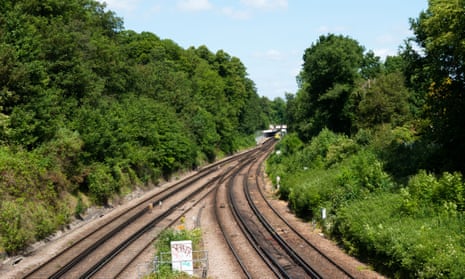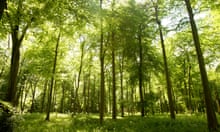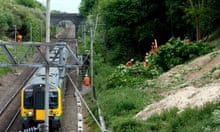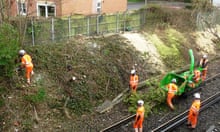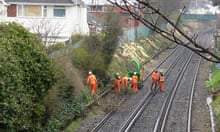A local authority has imposed preservation orders on trees growing on Network Rail land to stop them being felled by the operator.
Bromley Council said on Friday it had issued two tree preservation orders (TPO) on a group of mature oaks, sycamores and ash trees which grow alongside the railway, following Guardian revelations that Network Rail had considered an “enhanced clearance” programme.
Rail minister Jo Johnson called on Network Rail to suspend all current tree felling during what is the nesting season and commissioned a review into other options than felling for the rail operator.
The review, which is being carried out in conjunction with the RSPB and the Tree Council, will report to Johnson in August.
In order to protect its trees from action by Network Rail, Bromley council in greater London – which boasts the largest tree stock of any borough in the capital, has imposed two TPOs on a group of mature rail-side species in Ridgeway Drive.
Peter Morgan, Plaistow and Sundridge ward councillor said, “Trees form part of the much-loved character of our borough, with there being reputedly more trees in our borough than other London borough and protecting the trees, for the benefit of us all is important.
“I am pleased to confirm that the council has introduced a tree preservation order which protects the much-valued trees, including semi-mature oak trees, on railway land in Ridgeway Drive in Bromley.”
He said the order – made in September – gave protection to all the trees which were present at the time. Morgan said: “It is important to note that this does not prevent Network Rail from carrying out necessary works in line with their statutory requirements ... it does mean that they are required to seek the council’s permission for any work.”
The area where trees are now protected from felling by the rail operator covers 5,000 sq metres (5980 sq yards) worth of land alongside the railway line. The council said the species growing include a range of broad leaved trees, mainly oak, both Turkey oak and English oak, with some other trees including sycamore and ash.
Network Rail has identified these species as the most problematic in terms of leaves falling on the line. A Network Rail internal document identifies 13 million trees within falling distance of the track – some on third party land and some on its own land.
The document explored policy options for future tree management and identified a preferred option of ‘enhanced clearance’. Network Rail says the document is “a piece of modelling work” that was not adopted as policy.
